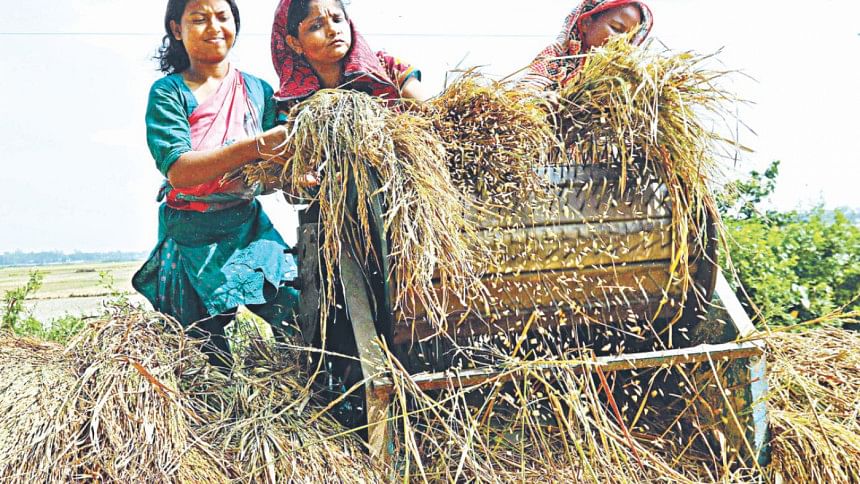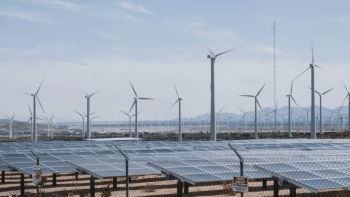Structural changes in Asian rice trade: Lessons for Bangladesh

The recession of 2007-2008 that sent rice prices spiralling came as a shock to all rice producing and consuming countries which prompted many to review their policies related to rice production towards achieving food self-sufficiency within the shortest possible time.
The world has witnessed how swiftly many countries have changed their approach for rice production from self-reliance to self-sufficiency.
The former policy was adopted when the world economy embraced globalisation and open market systems in the 1990s.
Reversal to the policy of self-sufficiency started giving dividend within three years. Rice production increased in many countries considerably. It happened thanks to increased allocation of resources by the government because of a drastic fall in international supports.
These changes in production have brought structural changes in international rice trade systems. The status of the top rice exporting country changed from Thailand to India through Vietnam within a decade (2007-2017). Cambodia and Myanmar showed their strong presence as rice exporting countries.
In the global rice trade, Thailand dominated until the first decade of the 21st century. The other main rice exporting countries were Pakistan, USA, China and India.
Bangladesh has been able to stop depending on rice import until 2015 and instead it exported 50 000 tonnes of rice to Sri Lanka in 2014.
However, rice production in Bangladesh is not stable due to recurrence of natural disasters, intensity of which is on the rise.
It was clearly evident in 2017. Vietnam was predicted by many international organisations to emerge as the number one rice exporting country in the world by 2016.
Although it did not entirely happen, the country briefly occupied the top position mainly due to disastrous rice policy undertaken by political government of Thailand.
Thailand has been suffering from this policy setback, although it started recovering gradually. Indian rice export increased rapidly due to the pragmatic programmes in the eastern part of the country under the name of the second green revolution.
Only 8 percent of rice (approximately 35-37 million tonnes) produced globally is traded in international markets. Global annual production in terms of milled rice totals around 450 to 452 million tonnes.
The share of rice export from South Asian (SA) countries has been increasing compared with their South East Asian (SEA) counterparts.
Mainland countries of SEA (Thailand, Vietnam, Cambodia, Laos and Myanmar) are rice exporting countries and they export around 16-18 million tonnes of rice annually.
On the other hand, island nations of SEA (Indonesia, Philippines, Singapore, Brunei and Malaysia) import rice, amounting to 5-6 million tonnes annually.
Due to massive policy changes, China is emerging as a major rice importing country of the world. The country imported 5 million tonnes of rice in 2016; the figure is likely to rise by 2020.
If this trend continues, China's rice import figure may reach around 16 to 20 million tonnes by 2030.
In near future, rice production may decrease in Thailand and Vietnam. Main reason behind it is that rice farmers are poorer than farmers growing other staple like wheat and maize.
In order to achieve the status of a wealthy nation, the first task is to pull out rice farmers from poverty. The main concern of these two countries is how to make rice farmers wealthier. Reduction of rice production is one of the ways toward achieving it.
Africa is consuming more rice than its production. Estimates show that Africa's rice consumption will increase 42 percent by 2030.
Nigeria is now the second largest importer of rice after China. Rice production in India increased from 89 million tonnes to 105 million tonnes during the period from 2009–2010 to 2014-15.
Out of 16 million tonnes of additional rice produced, more than 10 million tonnes came from seven eastern states of India which border on Bangladesh. Their contribution to national rice production increased from 51.24 percent to 53.24 percent during the same period.
Rice export has been increasing in Myanmar—another bordering country of Bangladesh—steadily.
It gives us hope that Bangladesh would be able to import rice from its two neighbouring countries when it needs most.
However, the most worrying aspect in global rice economy is the entry of China in the tiny rice market with its large demand of rice.
China will probably try to meet its production shortfall by importing from Vietnam, Cambodia and Myanmar. However, China prefers importing low-quality rice only for production of alcohol, noodles, animal feed and for other industrial uses.
Currently, 47 percent of rice in China comes from Vietnam. It has political implication as Vietnam is one of the strong rivals of China with regard to territorial disputes in South China Sea and has established close friendly relations with India.
Five island nations of Asean also imports around 5-6 million tonnes of rice annually. Rice imports are rising in Indonesia and the Philippines as these two islands are most disaster-prone.
Some countries in the Near East like Iran, Iraq and Saudi Arabia are also rice importing countries. Any production disturbance in Iraq and Iran may affect rice trade.
Bangladesh's efforts to increase rice production and productivity are well known which are reflected in the record of its success.
However, rice production in Bangladesh suffers from instability and is highly sensitive to external shocks created by both natural and manmade factors.
In case any major crisis hits rice production, the country may face several problems for importing rice as China and other countries may get priority over Bangladesh.
Indian rice is more likely to go to Iraq, Iran, Afghanistan and African countries rather than Bangladesh. Rice of Myanmar, Cambodia and Vietnam may go to China, if China faces any rice crisis internally.
In this context, Bangladesh has to relook at its rice policies and strategies in order to produce sufficient rice taking into account the likelihoods of shocks arising from climate change and also from import difficulties.
The writer is the former senior technical officer of the Food and Agriculture Organisation of the United Nations

 For all latest news, follow The Daily Star's Google News channel.
For all latest news, follow The Daily Star's Google News channel. 



Comments